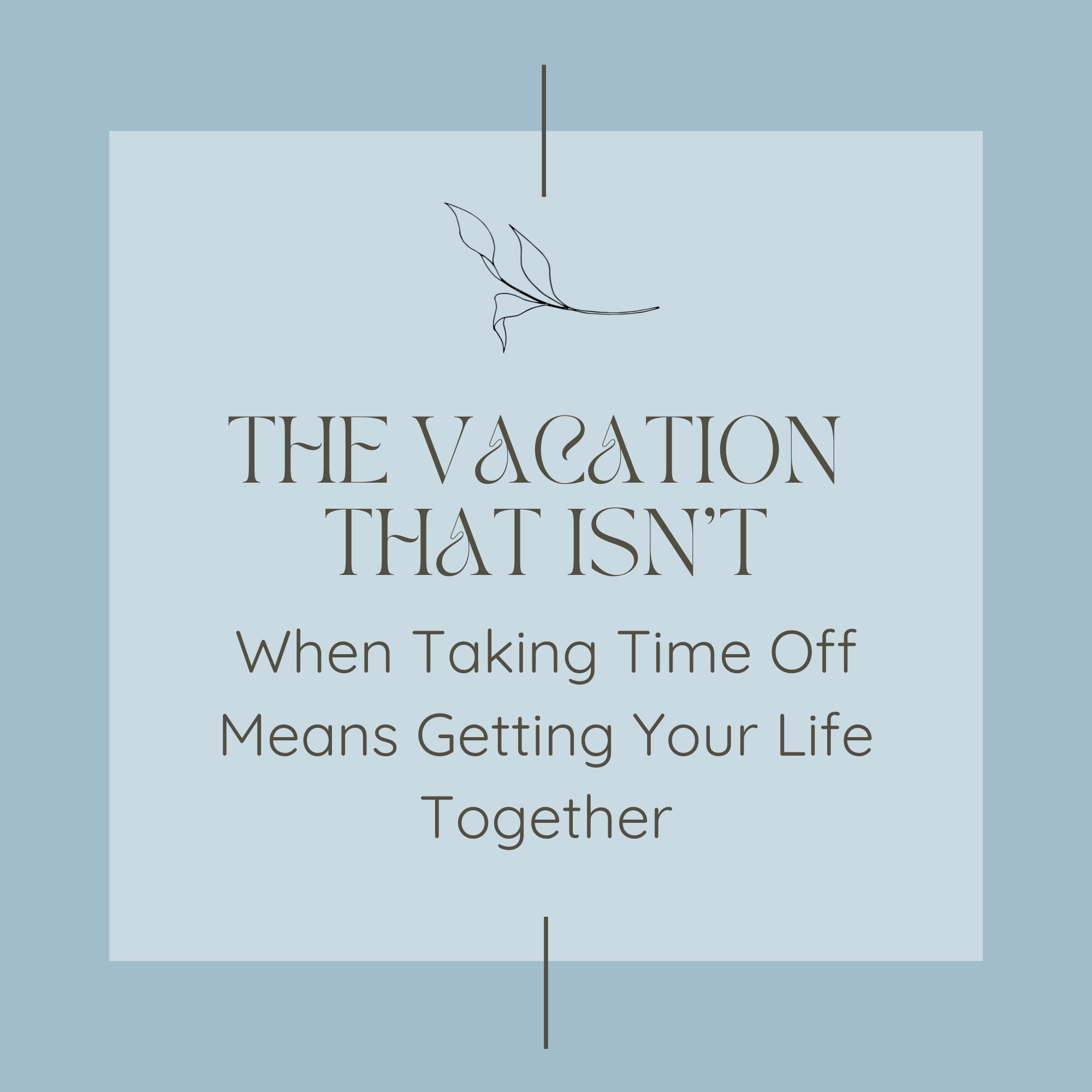“I’m taking two weeks off,” she announced, then immediately started listing her plans: reorganize the entire house, deep-clean the garage, finally tackle that pile of paperwork, maybe repaint the kitchen. I watched her face light up as she described her “vacation.”
Her friends were horrified. “That’s not a vacation! You need to relax! Go to a beach!”
But here’s the thing: for some brains, that garage-cleaning, paper-sorting, house-reorganizing marathon IS relaxation. It’s just not the kind Instagram wants you to post about.
If you’ve ever felt guilty for spending your “time off” getting your life together instead of lying on a beach, this one’s for you.
After transitioning from the controlled chaos of methadone treatment to private practice, I’ve observed something fascinating about how different nervous systems recharge. The wellness industry sells us one version of rest: passive, peaceful, preferably involving tropical locations and expensive smoothies. But neurodivergent brains often need something entirely different—and traditional relaxation advice completely misses this reality.
For many ADHD brains, traditional “relaxation” feels like cognitive torture. Their default mode network—the brain’s screensaver that activates during unstimulating periods—becomes hyperactive rather than restful. Picture trying to fall asleep while your mind plays a highlight reel of every embarrassing moment from seventh grade, mixed with tomorrow’s to-do list, seasoned with random song lyrics. That’s what “relaxing” on a beach can feel like for an ADHD brain. But give them a complex organizing project? Suddenly they slip into flow state—that magical zone where time disappears and the mind finds genuine peace. The dopamine reward system engages, the prefrontal cortex focuses, and the chaotic mental chatter finally quiets. It’s not hyperactivity; it’s balance.
Autistic brains follow a similar pattern, often finding deep satisfaction in creating order from chaos. The sensory overwhelm of daily life—fluorescent office lights, open-plan acoustics, the unpredictable social navigation of meetings—creates internal turbulence like static electricity building in a storm cloud. But spending a weekend systematically organizing every closet in the house? That’s not work. That’s restoration. It’s creating external order that mirrors the internal calm they’re seeking, like tuning an instrument until it resonates perfectly.
I witness this pattern repeatedly in my practice. The software engineer who spends vacation building furniture, finding in wood grain and precise measurements the same satisfying logic that code provides. The marketing director who uses time off to completely reorganize her digital files, creating systems that feel like meditation in motion. The teacher who deep-cleans her entire house during spring break and calls it the most refreshing week of her year. Society labels this wrong. We’re told we’re “workaholic” or “can’t relax properly.” But what if we’re actually demonstrating exquisite self-awareness, listening to our brains’ genuine needs rather than following prescribed formulas?
Some brains are wired for what scientists call “active restoration”—they recharge through engaging activities rather than passive ones. The dopamine hit from completing tasks, the satisfaction of visible progress, the meditative quality of repetitive organizing—these aren’t signs of dysfunction. They’re signs of brains that know what they need.
The key lies in intentionality. There’s a crucial difference between frantically cleaning because anxiety won’t let you sit still (depletion-driven) and methodically organizing because it genuinely restores you (restoration-driven). One feels like being chased by invisible tigers; the other feels like coming home to yourself.
I’ve learned to ask clients: “What actually makes you feel rested?” Not what should make you feel rested according to wellness magazines, or what makes other people feel rested according to social media. What actually works for your specific nervous system?
Sometimes the answer involves mountain trails and sunrise views. Sometimes it’s novels in hammocks with gentle breezes. And sometimes it’s spending three days color-coding your entire book collection while listening to podcasts about medieval history.
All of these are valid forms of restoration. Your version of rest doesn’t need to look like anyone else’s. It just needs to work for the intricate, beautiful, complex system that is your brain. So go ahead—plan that organizing vacation. Deep-clean that garage with the satisfaction of an archaeologist uncovering treasures. Tackle that project you’ve been postponing, feeling each completed task like a small victory.
Call it whatever you want, but don’t call it wrong.
Your brain knows what it needs. Trust it.

